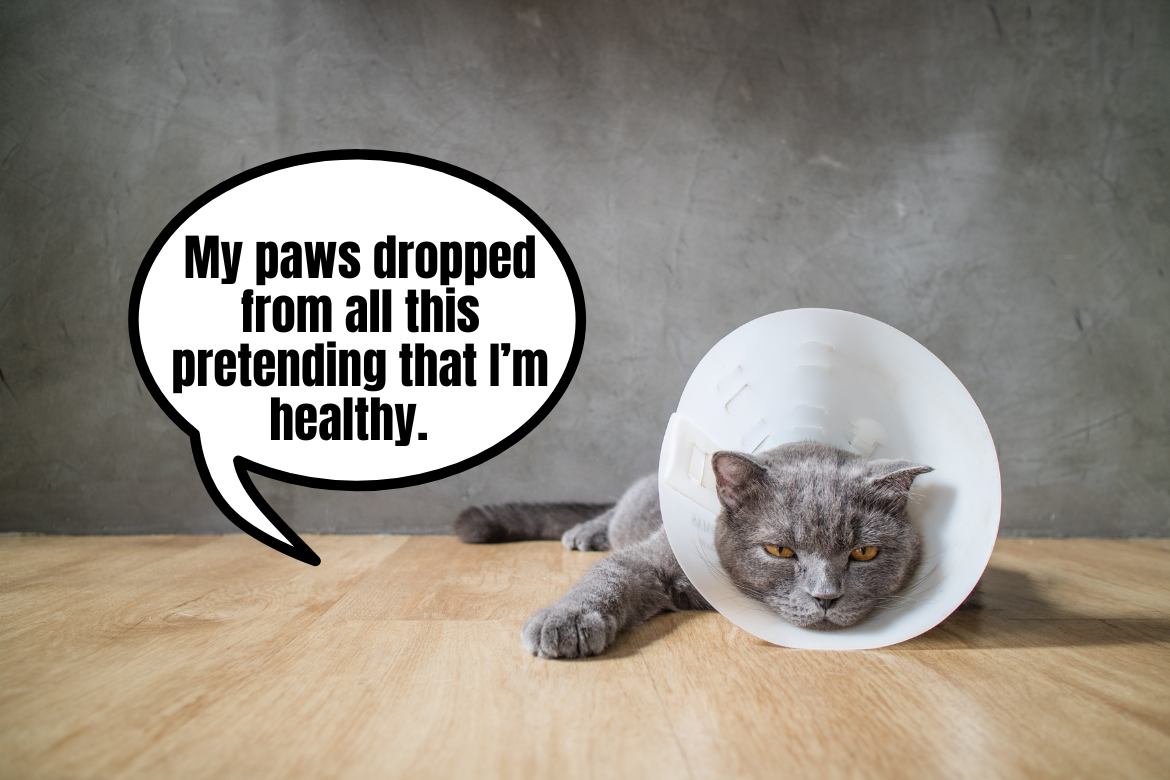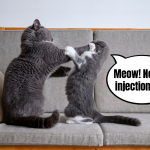We probably won’t be mistaken if we say, dear fabCats, that no cat Carer wants to see their feline friends hurting. Even the slightest changes in a cat’s behavior, all out-of-the-ordinary things they do, or unexpected reactions they have to certain things could make us alert and worried, sending the cat straight to the vet. The problem is that cats have learnt to mask their pain and are not keen on showing us they’re suffering. So how can we tell that there’s something wrong with our cats and what pain symptoms can we usually see?
The kitty was sick and stayed in his bed
Or he didn’t! Though cats who are in pain are usually less active and often sleepy, there are cases where their anxiety gets them moving around constantly, looking for our attention, acting relatively “normal” and not showing any symptoms of an illness by lying around in bed. Depending on the source of pain, behavioral changes can be subtle and almost invisible to an untrained eye. We, as cat Carers, should be very alert and observant if we want to spot them.
But why are cats so keen on hiding their pain? It’s all in their nature and the wild cat hiding inside our domestic feline friends. Cats are predators, but they can also be prey to other, stronger predators or even other cats. Hiding one’s pain is the natural defence mechanism – the cat can’t allow others to see its weakness. Our domestic cats don’t need to fear for their lives, but their defence mechanisms are so deeply rooted that hiding one’s pain is simply an automatic reaction to said pain.
How to recognise pain in cats?
The typical symptoms of pain in a cat can be sorted into a few categories: changes to the cat’s activity levels and daily schedule, behavioral changes, and changes to their body language and posture. A cat doesn’t necessarily show all the symptoms at once anytime they’re in pain and usually, most of the symptoms that are showing are closely tied to the source of the pain. But let’s get to the point.
Changes in daily activities. A cat in pain is allowed to be slower, and more sleepy, but also nervous, or even aggressive toward things that didn’t bother them before. Our task, as cat Carers, is to observe the cat and see any deviations from our cat’s usual behavior and if those deviations are worrisome, to discuss them with a vet. Based on a health check and general assessment, the specialist will be able to find the source of the cat’s pain.
Cats who are suffering often: sleep very little or sleep through the entire day, get very vocal in order to get our attention, have more appetite and get thirsty (or avoid eating and drinking), visit the litter box more often (sometimes paired with meowing, tensing up and leaving the box without doing their business), and groom themselves excessively (especially around the spot that’s hurting). A telling sign of a cat being in pain could also be their general apathy, slower movements, avoiding jumping and intense activity, slacking on grooming, and even avoiding their Carer by hiding around the house.
Changes in behavior. We partially mentioned them before, but some typical changes in behavior when a cat is hurting include hyperactivity, aggression, sudden bursts of energy, excessive licking, and grooming (or lack of hygiene), loud vocalisation (it’s often very loud, long meows or quiet squeals).
Body language. Communicating with their body language is one of the primary cat skills and if we learn to interpret it correctly, it will be easier for us to understand all the different signs our cats are sending our way. As it turns out, pain symptoms are also visible in a cat’s body language – the way they lay down, hold their whiskers and ears, or how tense their face is.
Pain positions – learn to recognise the first signs of a cat being in pain
In the case of cats and the symptoms they show, we often hear about something called the pain position. In reality, we can see a few variations of it, with cats using them interchangeably depending on the source of their pain. The pain position they choose is the one they feel most comfortable in despite being hurt.
The classic pose – the loaf. Cats like the loaf pose for their everyday lounging purposes, even if they’re completely fine. The pain-induced loaf is slightly different though – a cat is usually tucking their paws under the belly and trying to lift the belly up from the surface, not putting any weight on it. Cat’s “elbows” might be going up here to help with the weight distribution and keep the belly away from the surface they’re laying on. When a cat is standing up from such a loaf, they’ll make the classic “cat pose”, with their back up, their face, back, and body all tensed up. What the cat is trying to do here is to relieve some of the pain and we, cat Carers, seeing the loaf paired up with tensed-up whiskers, ruffled hair, squinted eyes and head pointing down can assume that there’s something wrong with our kitty.
The suffering sphynx. Another typical pain position for cats is the sphynx which does resemble a loaf in many ways except that here, the head and neck are pointing forwards for easier breathing.
Nap by the wall. Some cats who are suffering can become drawn to… walls! To cut themselves off from external stimuli and relieve some pain, a cat can be found pushing their head against the wall (or other flat surfaces) and looking like they are putting all their weight on the wall. Behavior like this is usually a sign of neurological problems, poisoning, strokes, and physical injuries that could cause a headache.
Painful litter box visit. Talking about cats’ pain positions, we can’t forget to mention the way a cat acts in their litter box when there’s something wrong. A suffering cat could be very cautious about getting into the litter box, tense up their back, paws, and all muscles while doing their business, as well as meow, avoid crouching, or even getting into the box altogether. Every single symptom mentioned here, as long as it’s not your cat’s typical behavior, should be discussed with a vet and followed by a series of tests (for urine and poop) to eliminate serious health issues.
Not sure? March to the specialist right away
There are two contradicting opinions about cat Carers going around: one that says cat people go into the vet’s office with every small change of their cat’s behavior, the other being that cat people don’t go to the vet often enough. The truth falls somewhere in between – one time when we were visiting the vet with our own cats, we talked about it a little with our vet and she said that our level of caution is, unfortunately, still quite rare. And this, dear fabCats, is what we would love to change together with you this year. Cats have mastered the art of hiding their pain and even if we feel ridiculous taking them to the vet for meowing too loudly, sometimes it’s worth being on the safe side and checking our cats’ health as often as necessary. Be the guardian of good cat Carer practices. Having any doubts about your cat’s behavior? March to the vet’s office and talk it through! In the best-case scenario, it will be a quick diagnostic visit and you’ll be back home, calmer and happy. Worst case? Your cat gets the medicine they need to help them get better before things get worse.




